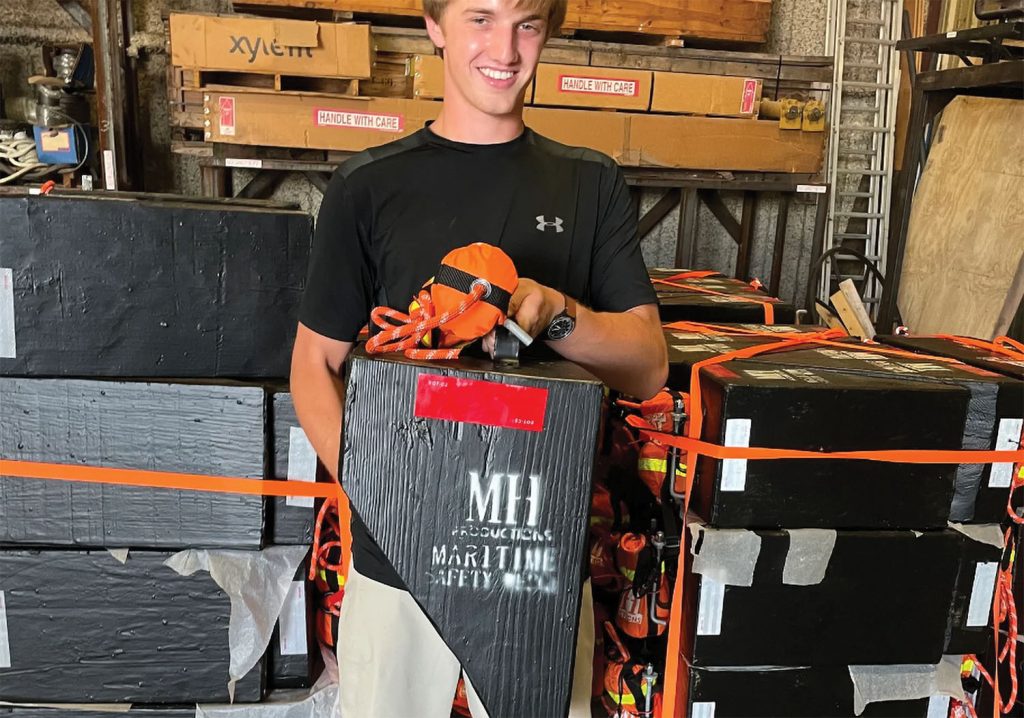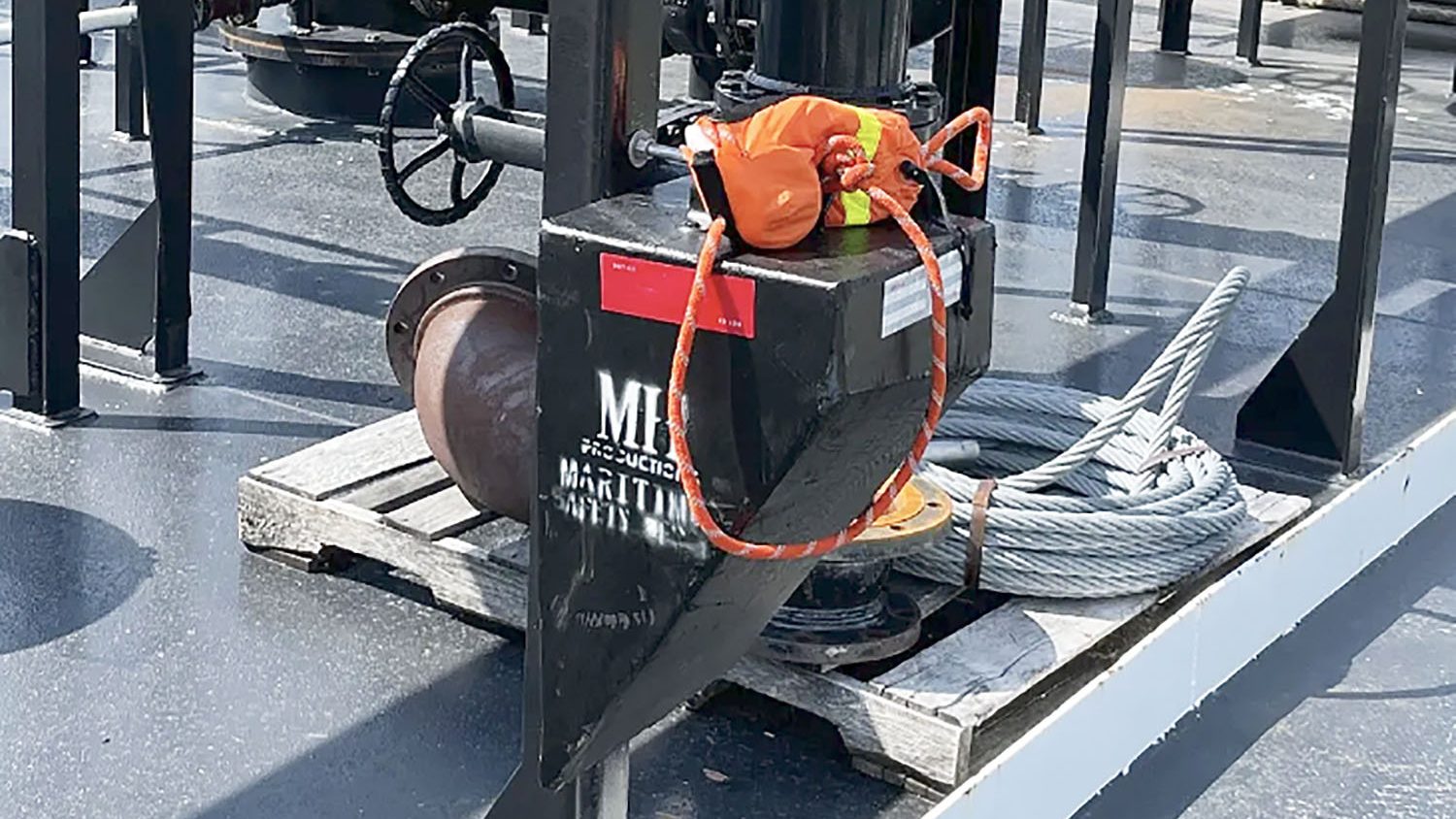Twenty-two-year-old Miles Harris grew up around the towboat and barge industry. His father, Roger, is a senior vice president at Magnolia Marine Transport in Vicksburg, Miss., and Harris has many other friends and relatives at work on the waterways.
Since he was a boy, Harris has been familiar with the life of mariners, their commitment to the job, and the essential nature of their work. He’s also had an awareness of the danger of the job, including the risk of falling overboard. But it wasn’t until he was in college, studying mechanical engineering at Louisiana Tech University in Ruston, La., that Harris realized he could potentially do something about it.
“My junior year, my father learned of a man overboard incident that had happened,” Harris said. “He approached me and asked, ‘Is there anything you can do?’”
Harris soon went to work in SolidWorks, a 3D and computer-aided design program, designing a tool that could be deployed when a mariner goes overboard. The goal was to design something that would maintain space between barges, helping protect the overboard mariner from being crushed before he or she could be rescued. Using the design program and a 3D printer, Harris began designing, printing and testing prototypes and gradually making improvements. Before long, Harris had developed a tool he now calls the Maritime Safety Wedge (MSW).
“After about four months and six designs, I landed on the current shape of the Maritime Safety Wedge,” Harris said. “About a year after that conversation with my father, we had the Maritime Safety Wedge.”
The MSW is cut from a pressure treated 12-inch by 12-inch beam, square on one end and tapering to a point on the other. It’s a robust design, and at just under 40 pounds, the MSW is relatively light.
“After a drying period, it’s dipped in rubber, so it’s treated on the inside and on the outside,” Harris said.
When not in use, the wedge is stored on a simple mounting bracket that can be installed in any easy-to-reach location on the towboat or barge.
“That’s one of the important things about the design,” Harris said. “Ease of installation.”
In the event of a mariner going overboard—for instance, while building tow—another mariner would toss one or more MSWs between barges, keeping the wedge in place by either holding the attached line or tying it off on a cleat.
“It’s as simple as picking it up and deploying it,” said Harris, who added that the MSW is not a mere bumper. “The Maritime Safety Wedge is meant to only be used in emergency situations. If you’re building tow and someone falls overboard, then you deploy it.”

Harris and a small team began manufacturing Maritime Safety Wedges for customers two summers ago, with the first shipments sent out in June 2022. So far, 220 units have been installed on a total of 115 barges. Several units have also been installed on towboats.
Harris said he understands the safety culture approach many companies take that focuses primarily on prevention versus protection.
“Prevention isn’t always possible,” he said. “You’re still going to need protection for the inevitable that will happen. The Maritime Safety Wedge in the beginning, now and in the future will always be about the safety of the mariners. I know a lot of people who are out there every day, and I’m focused on creating a safe work environment and protecting them.”
That focus on safety and eye for design has led to a second invention that Harris hopes to bring to market very soon: the Maritime Height Detector. That device will be mounted on the wheelhouse of a towboat to give air draft data in real time. Harris said rough tests were done in mid-October in Ruston, with on-vessel testing to follow.
Harris said he learned to love problem solving and mechanics from his father and grandfather, with whom he has restored cars, ATVs and even Jet Skis.
“Really anything with an engine,” he said.
He worked with his father on his award-winning 1932 Ford roadster. He also restored a pair of FJ40 Toyota Land Cruisers with his grandfather. That led to pursuing a bachelor’s degree in mechanical engineering at Louisiana Tech. Harris expects to graduate in the spring next year.
When not in school, Harris has been marketing the Maritime Safety Wedge himself, like at the Gulf Intracoastal Canal Association’s annual seminar in July. After graduation, Harris said he plans to focus even more on the Maritime Safety Wedge, the Maritime Height Detector and, hopefully, future products.
For more information on the Maritime Safety Wedge, go to mhproductionsonline.com.
Caption for top photo: Miles Harris with the Maritime Safety Wedge, which he developed to protect mariners in man-overboard emergencies. (Photo from MH Production website)




